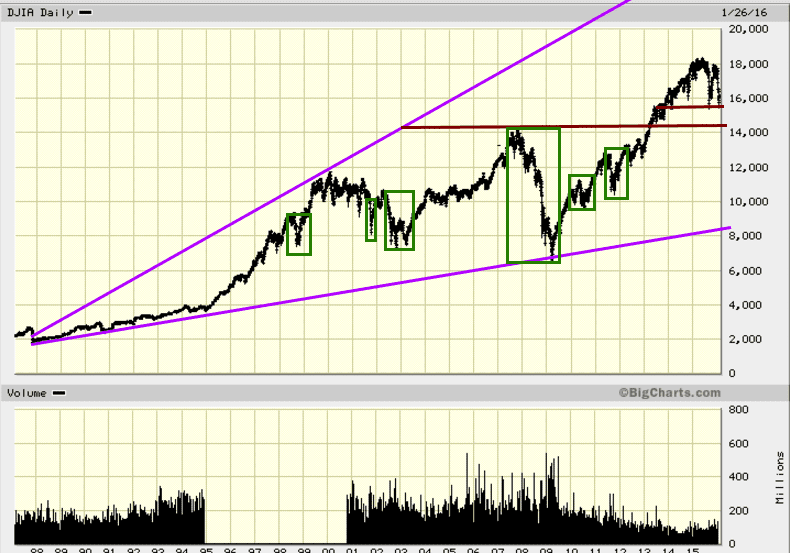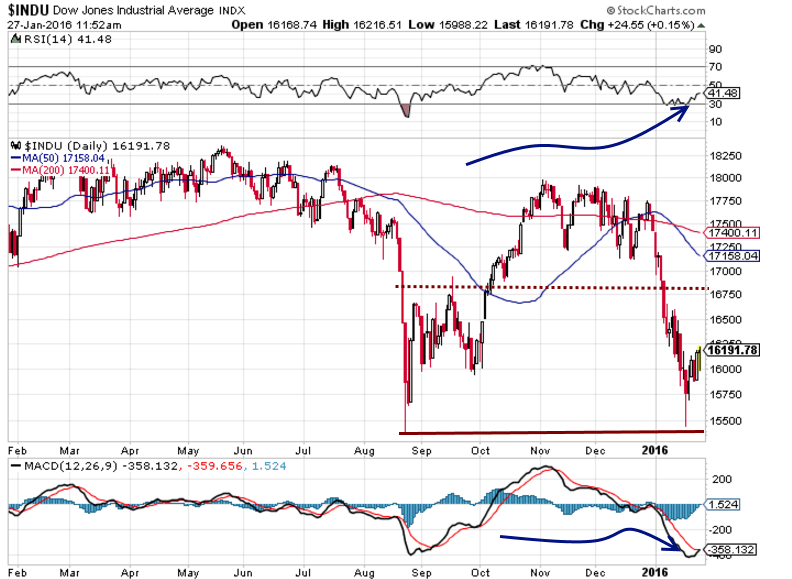
October 1987 Stock Market Crash: Big Gains for the Wise, Pain for the Rest
Do not wait for ideal circumstances nor for the best opportunities; they will never come. Anonymous
Dec 11, 2024
We couldn’t resist including the term “stock market crash” in the title, as it seems to be on everyone’s lips. Many voices want you to believe that we’re teetering on the edge of a Black Monday redux. However, these same individuals often overlook a crucial point: astute investors who focused on recovery following the 1987 stock market crash are the ones who reaped substantial rewards.
Fears are growing, with some expressing concerns about a recurrence of the 2008 crash, prompting investors to seek refuge. This sentiment has been echoed in articles like “The Guardian.”
Headlines like “A Stock-Market Crash of 50%+ Would Not Be a Surprise” on Yahoo Finance and “Stock Market Crash 2016: This Is The Worst Start To A Year For Stocks Ever” on rightsidenews.com only add to the apprehension.
The naysayers are busy listing several factors that could trigger another crash. Still, it’s important to remember that stock market crashes like the one in 1987 are often viewed as buying opportunities from a mass psychology perspective.
Navigating the Lessons of the October 1987 Stock Market Crash
Amid market uncertainties, naysayers tirelessly enumerate various factors that do not augur well for the market’s future.
One of these factors is ultra-low oil prices. It’s worth pondering this: not too long ago, experts warned us about the detrimental effects of high oil prices on the economy. So, which narrative holds? Many oil companies may face bankruptcy, but those that weather the storm will emerge stronger, poised for the next bullish phase. Interestingly, the current low oil prices have driven a surge in car sales, setting a record with 17.5 million vehicles sold. Consumers are now embracing gas guzzlers they previously avoided due to high fuel costs. Ultra-low oil prices can be likened to a financial stimulus of nearly $1 trillion injected into the global economy, as this is the amount the world economy stands to save under these conditions.
The Monumental Buying Opportunity of the October 1987 Market Crash
October 19, 1987, etched its name in financial history as “Black Monday,” when global stock markets spiralled downward in a stunning freefall. The Dow Jones Industrial Average plunged 22.6%—the largest single-day percentage drop in history. Panic gripped investors, media headlines screamed apocalypse, and for many, it felt as though capitalism itself teetered on the brink. Yet, amid the chaos lay an extraordinary opportunity that few had the foresight—or courage—to seize.
While devastating in the short term, the 1987 crash was not driven by a fundamental economic collapse. Unlike the Great Depression or the 2008 financial crisis, this meltdown was a confluence of technical triggers: the rise of programmatic trading, excessive market speculation, and a lack of regulatory safeguards. The economy’s underlying structure remained sound, and corporate earnings growth continued unabated.
For astute investors, the market’s precipitous decline represented a fire sale of epic proportions. Blue-chip stocks with strong fundamentals suddenly traded at deep discounts. Investors like Warren Buffett, who famously thrive in times of fear, stepped in to buy when others fled. History proved them right: within two years, the Dow rebounded by more than 50%, rewarding those who dared act against the prevailing panic.
The 1987 crash is a testament to a timeless investment principle: when fear reigns supreme, opportunity abounds. Those who remain steadfast in their analysis, focusing on value rather than sentiment, can transform market turmoil into generational wealth-building moments. While most see the storm, the prepared to see the rainbow—a truth that remains as relevant today as it was then. Black Monday was not the end of the financial world; it was a beginning for those bold enough to believe in the resilience of markets and the power of contrarian thinking.
Is This Time Any Different?
Let’s pause to consider the current financial landscape. This narrative might seem familiar: looming catastrophe, imminent stock market crash warnings, and advice to take cover. Although recent market movements have been volatile, historical trends show that markets eventually rebound and trend upwards. It is essential to highlight that those who persevered through the 1987 crash ultimately realized significant gains.
You might point to Japan as an exception, a market still trying to catch up decades later. However, it’s essential to recognize that the circumstances in Japan occurred in a different era. Today, we’re characterized by a choice between devaluation or decline. Traditional economic principles are set aside as significant economies tend to devalue their currencies voluntarily or due to external pressures. Central banks often counter these shifts by increasing market liquidity.
Despite these obstacles, analyzing the long-term Dow chart confirms that each crisis has historically been an investment opportunity. Drawing on Jakob Fugger’s insights, the famed financier of the Renaissance, we see the value in seizing economic opportunities that arise from market fluctuations. Similarly, Montaigne’s reflections teach us the importance of perspective; he urged that wisdom and patience are paramount in times of turmoil. By integrating Fugger’s strategic investment principles with Montaigne’s philosophical steadiness, we can navigate current and future financial storms with informed resilience, transforming challenges into profitable opportunities.
Despite these challenges, if we examine the long-term Dow chart, it becomes evident that every so-called disaster ultimately presented itself as a buying opportunity.
The Quantum Investor: Harnessing Parallel Market Realities
Just as quantum particles can exist in multiple states simultaneously, savvy investors can position themselves to benefit from seemingly contradictory market conditions. This approach goes beyond traditional contrarian thinking, embracing the uncertainty principle to create a portfolio that thrives on market volatility.
Key points:
1. Superposition of investment strategies: Maintaining contradictory positions to benefit from multiple market outcomes.
2. Quantum entanglement of assets: Identifying and leveraging correlated market movements across seemingly unrelated sectors.
3. The observer effect in the market analysis: How studying markets can influence their behaviour.
4. Quantum tunnelling for breakthrough investments: Seeking opportunities that defy classical market barriers.
Embrace Every Crash with a Bullish Outlook, Even 1987
We have consistently advocated against buying right at market peaks. Our approach has always considered significant pullback opportunities to initiate new positions. Has the landscape changed significantly since last year? Are we now inclined to align ourselves with the pessimistic crowd? Before addressing that question, let’s delve into volatility.
Last year, we repeatedly highlighted the volatility issue, as our Volatility Indicator had surged into record territory. In early January, we revisited the comments we shared with our subscribers in December 2015, listed below.
Our V indicator has surged to yet another high, so extreme volatility is here to stay. In fact, 2016 will probably be remembered as the most volatile year on record.
Volatility is a two-way street; one should expect large price swings on both ends of the scale. Given the run-up the markets have experienced over the past seven years, the current correction, while strong, is nothing to panic over.
Technical Outlook
Panic Equals Opportunity
It’s evident that traders are panicking, and short-term market psychology has suffered. However, it’s important to distinguish between short-term and long-term perspectives. Last week, we noted that the volume on most down days was considerably lower than on up days. Could this be an indication of intelligent money entering the market? Only time will provide the answer.
In the short term, the markets find themselves in oversold territory, which opens the door for a potential relief rally at any moment. The MACD and Relative Strength Indicator (RSI) are currently trading in oversold ranges, with the MACDs on the verge of a bullish crossover. Given the magnitude of the correction, there’s a reasonable chance that we haven’t reached the lows yet. The Dow will likely rally in the 16,700-16,900 range before retracing and dipping below current lows. This drop, possibly below the August lows, could shake out the remaining bulls, laying the foundation for a bottom and an upward price movement.
As Seneca once wisely noted, “Fortune is like glass—the brighter the glitter, the more easily broken.” This perspective is crucial in times of market turbulence when the appearance of a bear market can swiftly shatter. By adhering to this ancient wisdom, investors can see beyond the immediate chaos and recognize the long-term opportunities such disruptions often present.
John Lynch also advises, “Be fearful when others are greedy, and greedy when others are fearful.” Embracing this mindset allows us to capitalize on the panic by meticulously selecting stocks that have been unjustly beaten down. This strategy is not just about survival; it’s about thriving in the aftermath of the panic, leveraging the market’s irrational behaviours to our advantage.
Conclusion: October 1987 Stock Market Crash
“Embracing Chaos: The Contrarian’s Path to Prosperity”
As we navigate the tumultuous waters of today’s financial markets, history’s lessons and cutting-edge thinking offer a beacon of hope for astute investors. From the October 1987 crash to the quantum realms of investment strategy, one truth remains constant: opportunity often disguises itself as adversity.
The bandwagon effect, a powerful force in mass psychology, can lead investors to make irrational decisions based on the actions of others. This lemming-like behaviour, where individuals follow the crowd without questioning the direction, often results in missed opportunities or devastating losses. However, for the contrarian investor, this herd mentality creates fertile ground for profit.
By embracing a quantum approach to investing, we can benefit from multiple market realities. This strategy, combined with the wisdom of historical figures like Jakob Fugger and Michel de Montaigne, allows us to see beyond the immediate chaos and recognize the long-term opportunities that market disruptions present.
Standing at the crossroads of panic and opportunity, let us remember Seneca’s words: “Fortune is like glass—the brighter the glitter, the more easily broken.” In the face of market turbulence, it is not fearful who prosper but those who can maintain a calm demeanour and harness collective anxiety to reinforce their investment strategies.
The path of the contrarian is not for the faint of heart. It requires courage to stand apart from the crowd, wisdom to see opportunity where others see only risk, and the patience to wait for market sentiments to align with reality. Yet, the rewards can be extraordinary for those who dare to think differently and embrace chaos as a catalyst for growth.
As we look to the future, let us not be swayed by the clamour of doomsayers or the euphoria of bull markets. Instead, let us cultivate the mindset of the quantum investor, ready to seize opportunities across multiple market realities. Ultimately, it is not the market that determines our success but our ability to navigate its complexities with insight, courage, and unwavering conviction.
Unconventional Articles Worth Exploring












